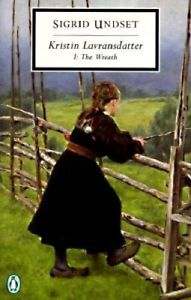Dodie Smith
St. Martins Griffin, 1976 reprint of the 1948 original
340 pages
This is my first Dodie Smith novel, but it won't be my last. I discovered this one on the Books and Chocolate blog and thought it sounded like a fun read for a classic novel by a woman. And I wasn't disappointed in the least!
The narrator is 17-year old Cassandra Mortmain, who is writing a diary of her life in an old, very run-down castle in rural England, circa 1934. Her father, James, once wrote "a very unusual book called 'Jacob Wrestling', a mixture of fiction, philosophy and poetry." He made quite a lot of money from it, but then he mysteriously stopped writing and they are now desperately poor. He is married to Topaz, stepmother to his children, who is famous as a model, painted (with or without clothes) by many British artists. Cassandra has an older sister, Rose, and a younger brother, Thomas. The household is rounded out by Stephen Colly, a young man whose late mother had been the family's servant, plus a dog and a cat, wittily named Héloïse and Abelard.
The story is fun to read and I took it in great gulps over 2 days. Cassandra muses on interesting topics from a 17-year-old's perspective: poverty, religion, social class, and how Americans are different from the English.
What I found surprising is that there is nary a word about the Great War. The setting is a small village close enough to London to go for a day using the train, not exactly isolated from the wider world. World War I ended in 1918 and this is 16 or 17 years later (Cassandra is a bit fuzzy on the current year). Since many of the characters in the story would have been of military age during the war, it just seems unusual that no mention is made of wartime service or veterans, not even in passing. I read in a review somewhere that Dodie Smith wrote this in the 1940s in America, where she had moved to escape World War II. It makes me wonder if, after the horrors of WWII, she was looking back on more idyllic times for her country and simply edited out the other war from her storyline.
I enjoyed this novel a lot and might consider re-reading it one day, not something I do very often. There are so many, many books that I want to read that I usually just keep moving on to new reading adventures.






